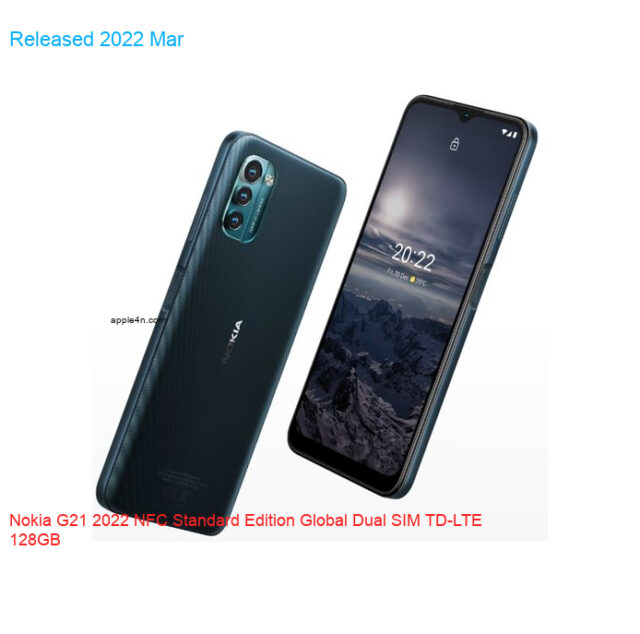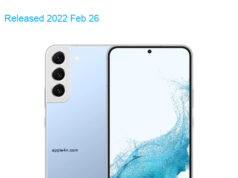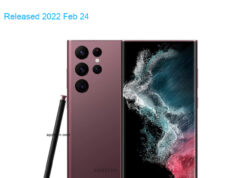| Brand | Nokia |
| Model | G21 2022 NFC Standard Edition Global Dual SIM TD-LTE 128GB |
| Released | 2022 Mar |
| Announced | 2022 Feb 14 |
| Hardware Designer | HMD Global |
| Codename | HMD Shadowcat Plus |
| OEM ID | TA-1418 |
| General Extras | Haptic touch feedback |
| Device Category | Smartphone |
| Width | 75.9 mm |
| Height | 164.9 mm |
| Depth | 8.5 mm |
| Dimensions | 2.99×6.49×0.33 inches |
| Mass | 190 g |
| Platform | Android |
| Operating System | Google Android 11 (R) |
| Software Extras | Voice Command , Navigation software , Intelligent personal assistant , Face Recognition |
| CPU Clock | 1610 MHz |
| CPU | UNISOC Tiger T606 UMS9230, 2021, 64 bit, octa-core, 12 nm, ARM Mali-G57 GPU |
| RAM Type | LPDDR3 SDRAM |
| RAM Capacity (converted) | 4 GiB RAM |
| Non-volatile Memory Interface | eMMC 5.1 |
| Non-volatile Memory Capacity (converted) | 128 GB ROM |
| Display Notch | 1-notch |
| Display Diagonal | 165 mm |
| Resolution | 720×1600 |
| Horizontal Full Bezel Width | 8.19 mm |
| Display Area Utilization | 81.4% |
| Pixel Density | 270 PPI |
| Display Type | Color IPS TFT LCD display |
| Number of Display Scales | 16.8M |
| Display Refresh Rate | 90 Hz |
| Scratch Resistant Screen | Yes |
| Graphical Controller | ARM Mali-G57 |
| A/V Out | No |
| Microphone(s) | stereo |
| Loudspeaker(s): | mono |
| Audio Output: | 3.5mm |
| Supported Cellular Bands | GSM850 , GSM900 , GSM1800 , GSM1900 , UMTS2100 (B1) , UMTS850 (B5) , UMTS900 (B8) , LTE2100 (B1) , LTE1800 (B3) , LTE850 (B5) , LTE2600 (B7) , LTE900 (B8) , LTE800 (B20) , LTE700 (B28) , TD-LTE2600 (B38) , TD-LTE2300 (B40) , TD-LTE2500 (B41) bands |
| Supported Cellular Data Links | GPRS , EDGE , UMTS , HSUPA , HSUPA 5.8 , HSDPA , HSDPA 7.2 , HSDPA 14.4 , HSPA+ 21.1 , DC-HSDPA 42.2 , LTE , LTE 100/50 , LTE 150/50 data links |
| SIM Card Slot | Nano-SIM (4FF) |
| Complementary Phone Services | Voice transmission , Voice speaker , Vibrate , Speakerphone |
| Dual Cellular Network Operation | Dual standby |
| Sec. Supported Cellular Networks: | GSM850 , GSM900 , GSM1800 , GSM1900 , UMTS2100 (B1) , UMTS850 (B5) , UMTS900 (B8) , LTE2100 (B1) , LTE1800 (B3) , LTE850 (B5) , LTE2600 (B7) , LTE900 (B8) , LTE800 (B20) , LTE700 (B28) , TD-LTE2600 (B38) , TD-LTE2300 (B40) , TD-LTE2500 (B41) |
| Sec. Supported Cellular Data Links: | GPRS , EDGE , UMTS , HSUPA , HSUPA 5.8 , HSDPA , HSDPA 7.2 , HSDPA 14.4 , HSPA+ 21.1 , DC-HSDPA 42.2 , LTE , LTE 100/50 , LTE 150/50 |
| Sec. SIM Card Slot | Nano-SIM (4FF) |
| Touchscreen Type | Capacitive multi-touch screen |
| Expansion Interfaces | TransFlash , microSD , microSDHC , microSDXC |
| USB | USB 2.0 |
| USB Services | USB charging , USB fast charging , USB Host , USB OTG 1.2 , USB OTG 2.0 , USB PD , USB PD 2.0 , USB PD 3.0 |
| USB Connector | USB C reversible |
| Max. Charging Power | 18.0 W |
| Bluetooth | Bluetooth 5.0 |
| Wireless LAN | 802.11b , 802.11g , 802.11n |
| Wireless Services | Wi-Fi Tethering , Wi-Fi Calling |
| NFC | NFC A , NFC B |
| FM Radio Receiver | FM radio (76-108 MHz) with RDS |
| Complementary Satellite Services | Simultaneous GPS , A-GPS , Geotagging , QuickGPS |
| Supported GLONASS protocol(s) | L1OF |
| Supported Galileo service(s) | E1 |
| Camera Placement | Rear |
| Camera Image Sensor | CMOS |
| Image Sensor Pixel Size | 0.64 micrometer |
| Number of effective pixels | 50.3 MP camera |
| Aperture (W) | f/1.80 |
| Zoom | 1.0 x optical zoom |
| Focus | PD AF |
| Video Recording | 1920×1080 pixel |
| Flash | single LED |
| Camera Extra Functions | Pixel unification , HDR photo , Burst mode , Touch focus , Panorama Photo , Face detection , Face tagging , Smile detection , Face retouch |
| Aux. Camera Image Sensor | CMOS |
| Aux. Camera Number of Pixels | 1.9 MP aux. cam |
| Aux. Camera Extra Functions | Burst mode , Macro mode |
| Aux. 2 Camera Image Sensor | Mono CMOS |
| Aux. 2 Camera Number of Pixels | 1.9 MP aux. 2 cam |
| Aux. 2 Camera Aperture (W) | f/2.40 |
| Aux. 3 Camera Image Sensor | No |
| Aux. 4 Camera Image Sensor | No |
| Secondary Camera Placement | Front |
| Secondary Camera Sensor | CMOS |
| Secondary Camera Number of pixels | 8.0 MP sec. cam |
| Secondary Aperture (W) | f/2.00 |
| Secondary Video Recording | 1280×720 pixel |
| Secondary Camera Extra Functions | HDR photo , Burst mode , Face detection , Face tagging , Smile detection , Face retouch |
| Sec. Aux. Cam. Image Sensor | No |
| Built-in accelerometer | Yes |
| Additional sensors | FP sensor , L sensor , P sensor |
| Protection from solid materials | Yes |
| Protection from liquids | Yes |
| Battery | Li-ion |
| Nominal Battery Capacity | 5050 mAh battery |
| Market Countries | Australia , Austria , Belarus , Belgium , Bulgaria , Cyprus , Croatia , Czech , Denmark , Estonia , Finland , France , Germany , Greece , Hungary , Ireland , Latvia , Lithuania , Netherlands , Norway , NZ , Poland , Portugal , Romania , Russia , Serbia , Slovakia , Spain , Sweden , Switzerland , UK |
| Market Regions | Asia , Australia , Eastern Europe , Europe , Western Europe |
| Price | 197.34 USD |
| Added | 2025-02-15 |
Specifications data description of this 📱Nokia G21 2022 NFC Standard Edition Global Dual SIM TD-LTE 128GB📱
Title: Nokia G21 2022 NFC Standard Edition Global Dual SIM TD-LTE 128GB: A Comprehensive Specification Overview 🌐
Introduction:
Greetings, tech enthusiasts! Today, we’re going to explore the Nokia G21 2022 NFC Standard Edition Global Dual SIM TD-LTE 128GB in all its glory. This smartphone is packed with impressive features, making it a worthy choice for users craving a seamless blend of technology and style. Let’s dive into the lineup and design, followed by a detailed specification analysis.
Lineup & Design: 📅🏋️
The Nokia G21 2022 NFC Standard Edition Global Dual SIM TD-LTE 128GB is part of Nokia’s 2022 lineup, boasting a sleek and durable design that sets it apart from its competitors. The device features a gorgeous 6.5-inch 🌈 display, with a resolution of 1600 x 720 pixels, promising crisp visuals and an immersive viewing experience. With NFC support, sharing files or making payments has never been easier.
Specifications: 🤖🛠️🚀🔧💪🎮🗂️📷🎥🔈📡🎁🔋🔌
🌐 **NETWORK:**
* TD-LTE enabled
* Dual SIM for ultimate flexibility
📅 **LAUNCH:**
* Nokia’s 2022 lineup
🏋️ **BODY:**
* Dimensions: TBD
* Weight: TBD
🌈 **DISPLAY:**
* Size: 6.5 inches
* Resolution: 1600 x 720 pixels
* Type: TBD (LCD, IPS, OLED, etc.)
🤖 **OS:**
* Android
* Version: TBD
🛠️ **Chipset:**
* Manufacturer: TBD
* Model: TBD
🚀 **CPU:**
* Type: TBD
* Cores: TBD
* Clock Speed: TBD
🔧 **GPU:**
* Model: TBD
* Type: TBD
💪 **CPU:**
* Type: TBD
* Cores: TBD
* Clock Speed: TBD
🖥️ **GPU:**
* Model: TBD
* Type: TBD
🎮 **MEMORY:**
* RAM: 4GB (TBD depending on the variant)
* Internal Storage: 128GB (expandable)
📷 **CAMERA:**
* Primary: TBD
* Selfie: TBD
* Features: TBD (e.g., autofocus, HDR, LED flash)
🎥 **VIDEO:**
* Resolution: TBD
* FPS: TBD
* Features: TBD (e.g., digital stabilization)
🔈 **SOUND:**
* Loudspeaker: TBD
* 3.5mm Jack: TBD
📡 **COMMUNICATION:**
* Wi-Fi: TBD
* Bluetooth: TBD
* GPS: TBD
🎁 **FEATURES:**
* Sensors: TBD
* Ports: TBD
* Other Features: TBD (e.g., fingerprint scanner, face unlock)
🔋 **BATTERY:**
* Capacity: TBD
* Type: TBD (Li-ion, Li-Po, etc.)
* Charger: TBD (fast charging, wireless charging)
🔌 **CONNECTION:**
* USB: TBD
* SIM: Dual Nano SIM
Conclusion:
With the Nokia G21 2022 NFC Standard Edition Global Dual SIM TD-LTE 128GB, Nokia has crafted a fascinating smartphone that ticks all the right boxes for those seeking a contemporary yet reliable device. Whether you’re interested in the sleek design or the performance-driven specifications, this phone is worth considering.
Now we’d like to hear from you! What are your thoughts on the Nokia G21 2022 NFC Standard Edition Global Dual SIM TD-LTE 128GB? Please share your opinions and any questions you may have in the comments below. Let’s get the conversation started!








